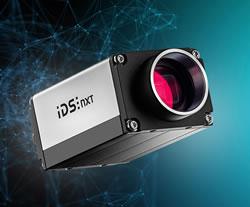'Father of Java' leaves Android maker Google For A True Robotics Company
New ISO Robot Safety Standards Published
New ISO Robot Safety Standards Published!
New Research Brings Simulations Of Complex Objects To Real-time
San Francisco Chronicle Profiles Willow Garage
IBM's Cognitive Computing Chips: Further Reading
China's Mammoth Intro to Robotics
Foot-Bots, Hand-Bots, and Eye-Bots
George C. Devol, Inventor of Unimate, Dies at 99
Pipetel's Pipeline Inspection Robots
Eight Tips for Optimal Machine Vision Lighting
Modkit
Automated Camera Movement and Tracking For Broadcasting.
Object Reconstruction And Recognition Leveraging An RGB-D Camera Like The Kinect
Open Source Snake Robots Creator Interviewed On Episode 7 Of Flexible Elements Podcast
Records 3511 to 3525 of 3557
First | Previous | Next | Last
Featured Product

